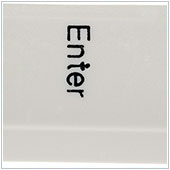
Here are 12 useful shortcuts you can use while presenting with PowerPoint 2010 and 2013.
- F5 – Pressing this key will start the presentation. By default it should start from the first slide. If you want to start from the slide you are currently viewing, hit Shift+F5. In PowerPoint 2013, you should also be able to hit S to start a presentation, as long as you aren’t editing a slide.
- N – Will flip to the next slide, foregoing all animations.
- Right arrow/Down arrow/spacebar – Tapping any of these keys will trigger the next animation. If there are no animations, it will switch to the next slide.
- P – Pressing this will flip to the previous slide.
- Left arrow/Up arrow/backspace – Hitting any of these keys will replay the last animation or switch back to the previous slide if there are no animations.
- Number + Enter – If you enter a number and hit Enter, you will be taken to the slide corresponding to that number. Be sure to hit the numbers in quick succession if there is more than one digit, or it may move you to an unintended slide.
- B – If you need to display a blank black screen, hit B. Clicking the mouse or tapping the key again should move back to the slide you were previously looking at.
- W – If you prefer to show a blank white screen, hit W.
- Ctrl + P – Changes the cursor from an arrow to a dot, with which you can annotate or draw on slides. Pressing E will erase any marks you have made.
- Ctrl + A – Changes the cursor to an arrow.
- Ctrl + H – Will hide the cursor
- Esc – Tapping this will end the presentation.
These keyboard shortcuts should help make your next presentation run a little bit easier, and may even help you if you forget your slide, or move forward too quickly. For more help with PowerPoint, or any of the Office programs, please contact us today.
Published with permission from TechAdvisory.org. Source.

